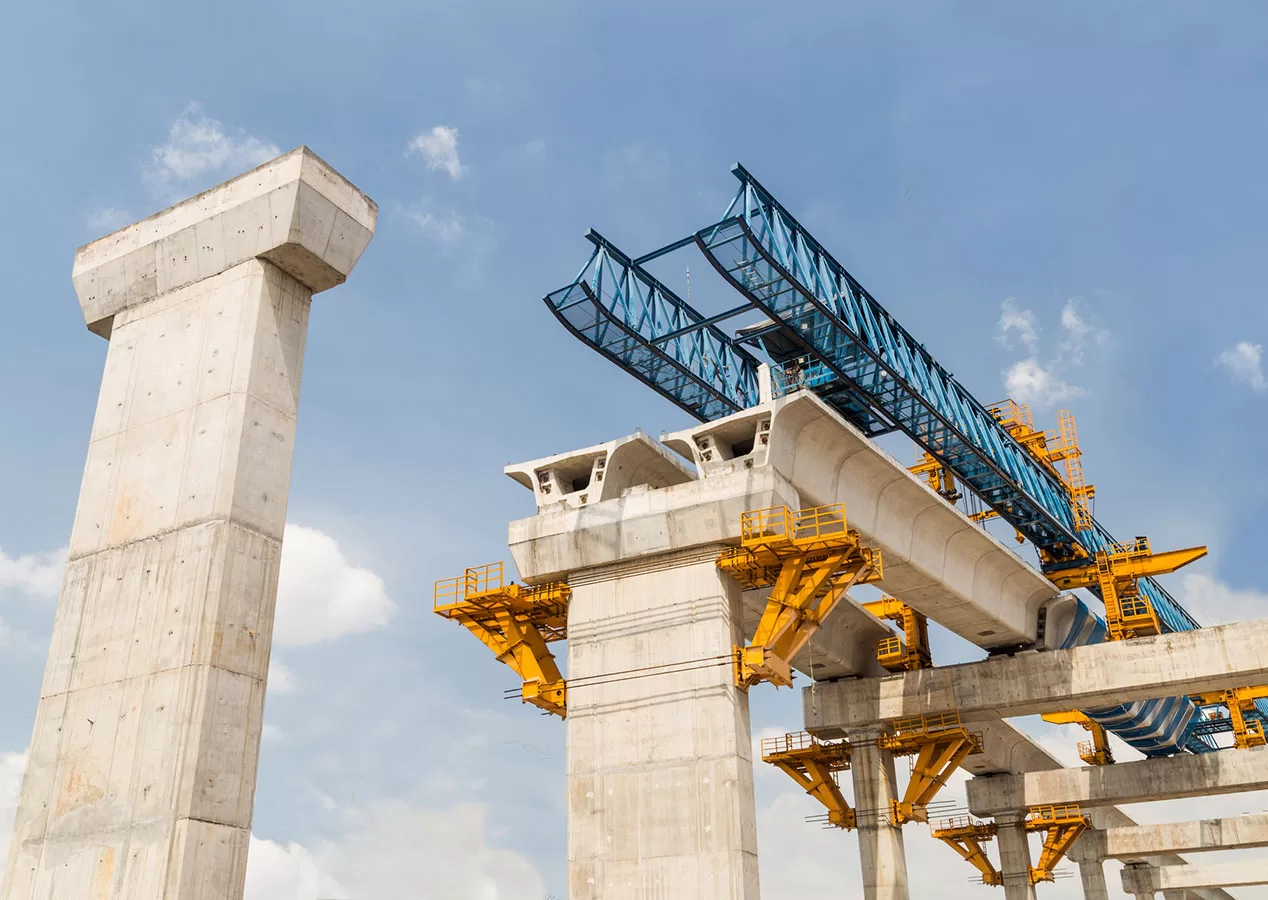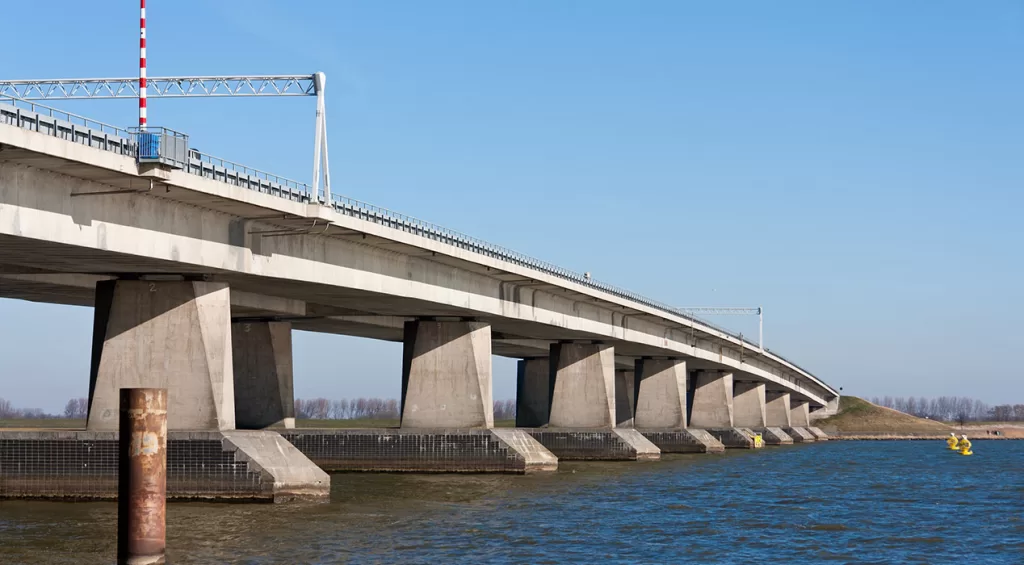



Most people look at concrete structures and assume that they’re made of the same material—a simple mixture of water, cement and fine and coarse aggregates such as sand and gravel. The finished product may look similar, but deep inside all concrete is not the same.
There are many different types of concrete, some of which can be used for the same purpose and others which are better suited for different applications based on their degree of strength, durability, flexibility and workability. These properties vary depending on how the concrete is produced: the constituent material, mix design and form of hydration reaction.
Concrete is classified based on its density, the nature of stress conditions and the type of material used in making it. Let’s take a quick look at the most popular types of concrete used in construction today.
Obtained by mixing the basic ingredients of cement, water and aggregate.
Has no reinforcement in it; mainly used in the construction of pavements and buildings, especially in areas where there is less demand for high tensile strength.
Regarded as the most important type of concrete; concrete to which reinforcement is introduced to bear the tensile strength; steel reinforcement can be rods, bars, meshes or fibers; used as reinforcement in the production process, giving it very high tensile strength; combination of steel and concrete leads to building material that can withstand all kinds of stress in construction, making it suitable for large scale constructions such as stadiums and tall buildings.
Commonly used in mega projects; special technique stresses bars or tendons before the actual service load application, and once hardened the unit is put in compression, which makes it stronger against tension; used in bridges, heavy loaded structures and roofs with longer spans.
Concrete shaped into molds, usually in a factory; examples include concrete blocks, staircase units, precast walls and poles.
Has density less than 1920kg/m3; made with lightweight aggregates such as pumice, perlites and scoria; has low thermal conductivity; used in the construction of building blocks and long-span bridge decks.
Has density ranging from 3000 to 4000 kg/m3; prepared with heavy aggregates, most commonly Barytes; used in power plants and other structures where radiation needs to be contained.
Concrete into which air is uniformly entrained to amount for up to 6% of the concrete; achieved by the addition of foams or gas such as resins, alcohols and fatty acids; used to avoid damage due to scaling or constant freezing.
Precise, specialty concrete that is developed based on certain specifications, mixed in a central mixing plant and brought to the jobsite via a truck-mounted transit mixer.
Concrete made with polymer instead of cement; thermosetting resins are used as main polymer component due to their high thermal stability and resistance to a wide variety of chemicals; adhesive properties, corrosion resistance and low permeability make it useful for swimming pools, sewer structure applications, drainage channels and other structures that contain liquids or corrosive chemicals.
Has strength greater than 40MPa achieved by decreasing the water-cement ratio to lower than 0.35; calcium hydroxide crystals are reduced by the incorporation of silica fume; less workable.
Must conform to standards such as strength gain in early age, easy placement, permeability and density factors, heat of hydration, long life and durability, toughness and life-term mechanical properties and environmental concerns.


Concrete mix that when placed compacts by its own weight, with no vibration needed; has higher workability.
Differs in the way it is applied on the area to be cast; concrete is shot into the frame or the prepared structural formwork with the help of a nozzle.
Designed to allow water to pass through it; created by a unique mixing process to have 15% to 20% voids of the volume of the concrete; used in the construction of pavements and driveways where stormwater issues persist.
Contains excess water that is then removed with the help of a vacuum pump before the concrete sets, allowing the concrete structure or platform to be ready to use earlier compared to normal construction techniques; attains 28-day compressive strength in 10 days; crushing strength is 25% greater compared to conventional concrete types.
Used in high-rise construction where concrete needs to be transported via conveyance system; fine materials are used so that the concrete has the adequate workability to be easily conveyed through the pipe.
Same as standard concrete but shaped into forms that imitate natural stones, tiles etc., with the use of stamping pads when the concrete is still in its pliable form; finished with colors and textures that give it a realistic natural look.
Contains lime as a binding agent instead of cement; commonly used in floors, domes and vaults; more environmentally friendly than standard concrete.
Composite material made of a mixture of aggregates and asphalts commonly used to surface roads, parking lots, airports and the core of embankment dams; hardens quickly.
High-density concrete placed and compacted with the help of earth moving equipment such as heavy rollers; mainly employed in excavation and as a filling material; contains less cement.
Acquires strength within a few hours after being poured, making formwork removal easier and speeding up construction; used for repairing roads and for underwater construction.
made with recycled glass as an aggregate; glass increases the aesthetic appeal of the concrete and provides long-term strength and better thermal insulation.
Has more tensile strength, flexibility and resilience thanks to steel fibers measuring 10 to 20 microns in diameter and 10 to 50 millimeters in length; used in construction projects where resistance to cracking is very important, such as airports, bridges and industrial floors; fiber can be steel, glass, polymer or natural.
Contains fly ash (derived from coal), which replaces fine aggregates, cement, or both; more pliable when fresh and very strong once it hardens.